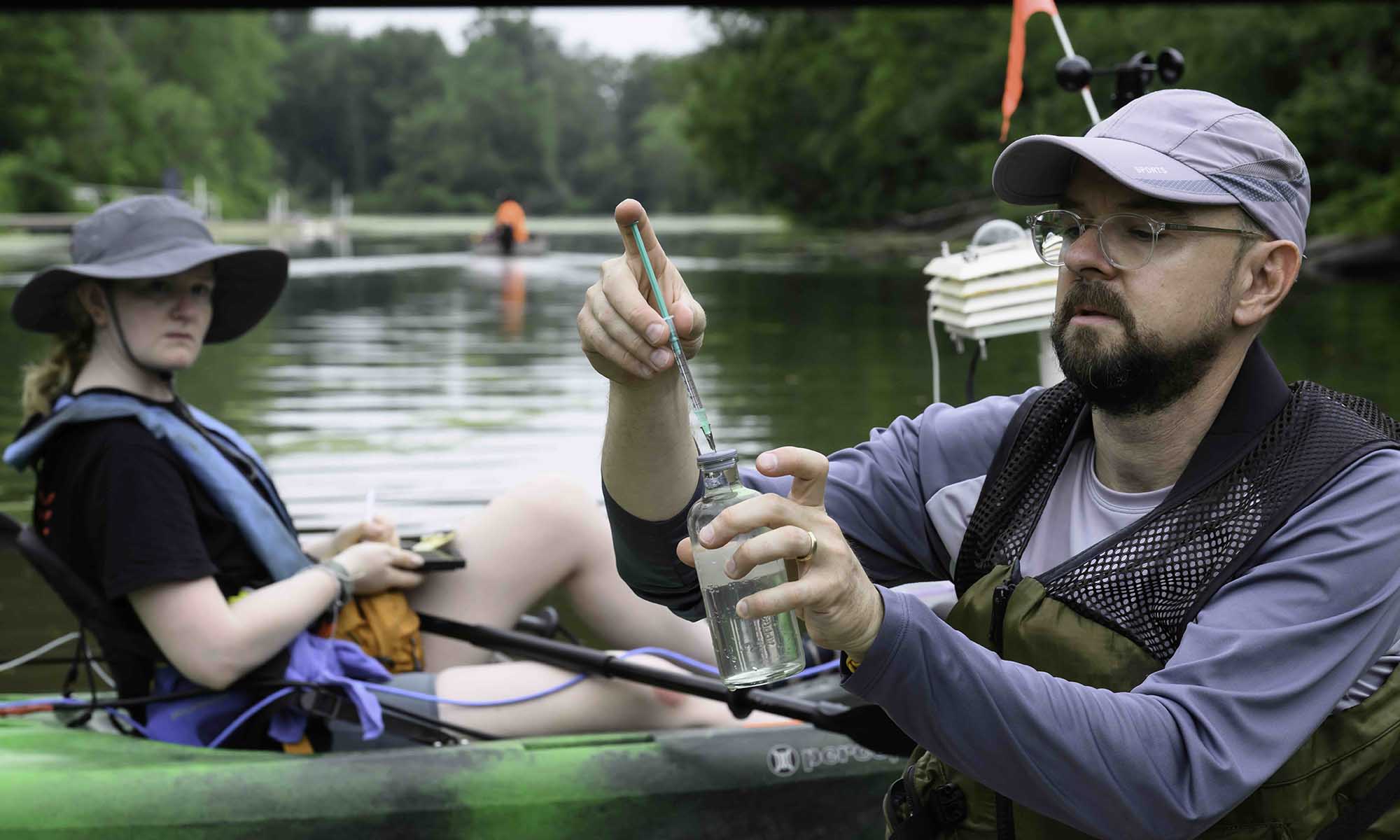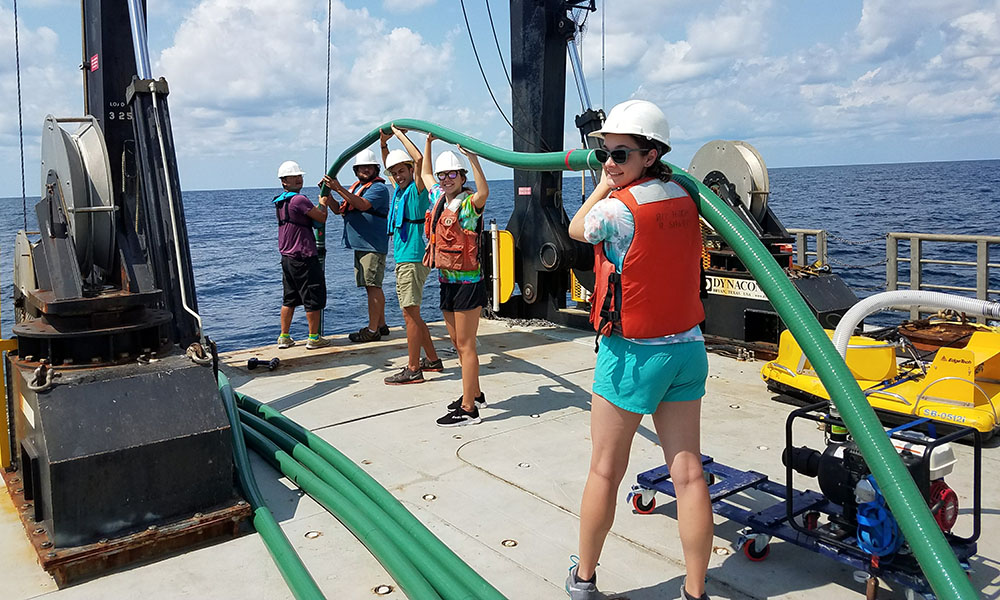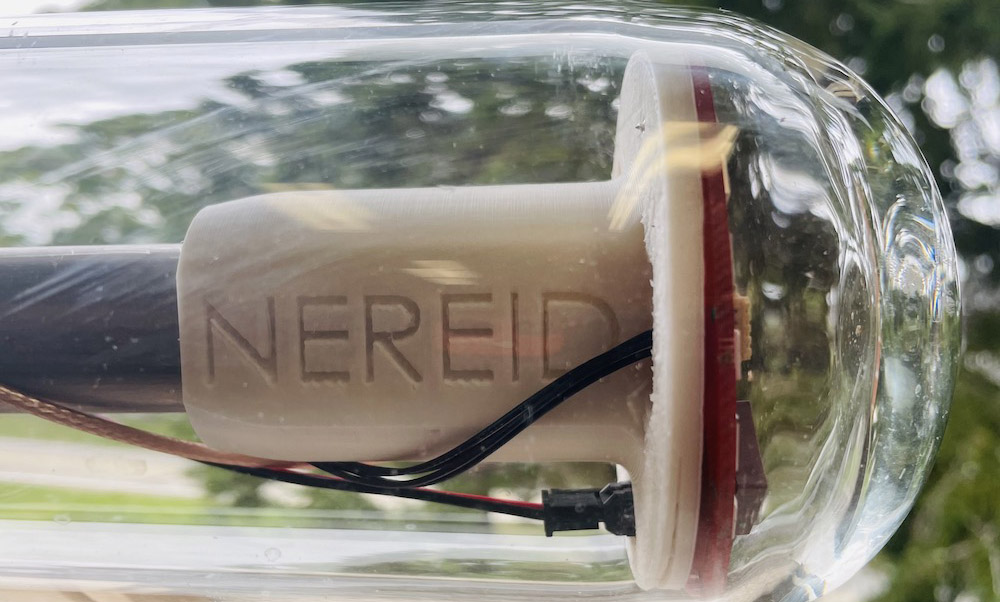Souped-up kayaks become ‘floating laboratories’ on the Genesee River
URochester researchers use specially designed kayaks to collect real-time data on methane and carbon dioxide emissions.
Equipped with sensors and scientific instruments, specially designed kayaks are serving as floating laboratories for University of Rochester researchers and PhD students studying the Genesee River and Erie Canal.
One location where this work is taking place is where the two waterways converge in Genesee Valley Park, just south of the University’s River Campus—an intersection that illustrates what happens when nature meets human innovation. The merging of the natural river with the engineered canal causes a shift in the physical and chemical properties of both systems, disrupting their stable states. Using their enhanced kayaks, URochester researchers are studying how these shifts impact the production and emission of greenhouse gases from the water.
Katherine “Katie” Gregory, a PhD candidate in the Department of Earth and Environmental Sciences, and Professor John Kessler have been conducting kayak-based research on the river to gather measurements of three dissolved gases—methane, carbon dioxide, and oxygen—as well as a host of other atmospheric and river properties. Methane and carbon dioxide are major greenhouse gases and the current focus of their river study.
“River environments have higher concentrations of these gases than the surrounding air, making them natural—or in the case of the canal, constructed—sources of these gases to the atmosphere,” says Gregory. “This contributes to the greenhouse effect, which causes Earth’s surface to warm.”
What we can learn from dissolved gases
Determining methane and carbon dioxide emissions from natural sources such as rivers helps to better constrain the magnitude of human sources such as agriculture. The net result is to improve our understanding of how greenhouse gas emissions from rivers might change in a warmer world.
“It is known that rivers are a strong natural emitter of greenhouse gases to the atmosphere,” Kessler says. “But because rivers are so heterogeneous and traditional measurement techniques don’t capture that heterogeneity, the magnitude of these emissions are currently highly uncertain.”

Studying Earth’s climate and understanding the dynamics of greenhouse gases across the entire planet and throughout Earth’s history are key focus areas of URochester’s Department of Earth and Environmental Sciences.
“The research that Katie is leading for her dissertation is developing the foundation needed to enable a much more comprehensive understanding of greenhouse gas dynamics in river systems, and thus a much more certain understanding of their emissions,” Kessler says.
Turning kayaks into research tools
To study greenhouse gas dynamics, Gregory and Kessler use specially equipped analytical kayaks—designed and developed at URochester and outfitted with atmospheric and aquatic sensors. The kayaks allow them to travel down the Genesee River and Erie Canal and gather continual measurements of dissolved gases such as methane, carbon dioxide, and oxygen.
“I am aware of very few groups that use kayaks as floating laboratories,” says Kessler. “And these other analytical kayaks measure far fewer variables, while being much more complicated to replicate. We specifically designed our analytical kayak with the intention that almost anyone—from high schoolers to senior researchers—can replicate it for their own educational experiences and scientific research.”
Kessler, Gregory, and Madeline Every, another PhD student in their group, have teamed up with the University’s Warner School of Education & Human Development to educate STEM teachers across western New York on how to incorporate some of this technology into their own classrooms.

Closing gaps in climate models
The traditional way of conducting research involving rivers means filling bottles with water and bringing them back to the lab for analysis, a process that limits researchers to single-point measurements rather than continual monitoring in river settings. The approach has caused river systems to be understudied when it comes to dissolved gas concentrations because the full geographic expanse cannot be measured.
“Continual measurements are almost never done in river settings, so there is not a lot of this data available for use in river and climate models, but our work is contributing significantly to that,” says Gregory. “This is important because leaving rivers out of global greenhouse gas models due to lack of data or high uncertainty means scientists are not getting the best possible information on which to base global climate predictions.”




